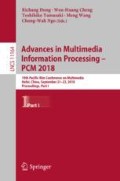Abstract
With respect to the prediction of short-term unoccupied parking space of parking guidance and information system (PGIS),a prediction method using genetic algorithm combined with recurrent neural network (RNN) is proposed. First, set the parameters of the RNN population, including the search space of the neural network’s hidden layers, neuron number, and neuron type. Then by setting the parameters of the genetic algorithm to drive and control the RNN training process, and using the RMSE value of the prediction result as the fitness function of the genetic algorithm to perform the individual evaluation index of the RNN. Finally, the RMSE values of the predicted results of all RNN individuals on the experimental dataset are compared through two different scenarios of prediction examples to obtain the best prediction model. The results of experiments show that this method has excellent prediction accuracy and wide applicability for the prediction of short-term and parking spaces in parking guidance information systems.
Access this chapter
Tax calculation will be finalised at checkout
Purchases are for personal use only
References
Choeychuen, K.: Automatic parking lot mapping for available parking space detection. In: 5th International Conference on Knowledge and Smart Technology (KST), pp. 117–121. IEEE (2013)
Zheng, Y., Rajasegarar, S., Leckie, C.: Parking availability prediction for sensor-enabled car parks in smart cities. In: IEEE Tenth International Conference on Intelligent Sensors, Sensor Networks and Information Processing (ISSNIP), pp. 1–6. IEEE (2015)
Keat, C.T.M., Pradalier, C., Laugier, C.: Vehicle detection and car park mapping using laser scanner. In: IEEE/RSJ International Conference on Intelligent Robots and Systems (IROS), pp. 2054–2060. IEEE (2005)
Pattanaik, V., Singh, M., Gupta, P.K., et al.: Smart real-time traffic congestion estimation and clustering technique for urban vehicular roads. In: Region 10 Conference (TENCON), pp. 3420–3423. IEEE (2016)
Kotb, A.O., Shen, Y.C., Zhu, X., et al.: iParker—a new smart car-parking system based on dynamic resource allocation and pricing. IEEE Trans. Intell. Transp. Syst. 99, 1–11 (2016)
Benson, J.P., O’Donovan, T., O’Sullivan, P., et al.: Car-park management using wireless sensor networks. In: 31st IEEE Conference on Local Computer Networks, pp. 588–595. IEEE (2006)
Yan-jie, J., Dou-nan, T., Blythe, P., et al.: Short-term forecasting of available parking space using wavelet neural network model. IET Intel. Transp. Syst. 9(2), 202–209 (2015)
Ji, Y.J., Chen, X.S., Wang, W., et al.: Short-term forecasting of parking space using particle swarm optimization-wavelet neural network model. J. Jilin Univ. Eng. Ed. 46(2), 399–405 (2016)
Haipeng, C., Xiaohang, T., Yu, W., et al.: Short-term parking space prediction based on wavelet-ELM neural networks. J. Jilin Univ. Sci. Ed. 55(2), 388–392 (2017)
Sampson, J.R.: Adaptation in natural and artificial systems (John H. Holland). SIAM Rev. 18(3), 53 (1976)
Rumelhart, D.E., Hinton, G.E., et al.: Learning representations by back-propagating errors. Nature 323(6088), 533–536 (1986)
Wang, Y.: Application Time Series Analysis. China Renmin University Press, Beijing (2012)
Gao, G.Y., Ding, Y., Jiang, F., Li, C.: Prediction of parking guidance space based on BP neural networks. Comput. Syst. Appl. 26(1), 236–239 (2017)
Zhang, G.P.: Time series forecasting using a hybrid ARIMA and neural network model. Neurocomputing 50(1), 159–175 (2003)
Acknowledgment
This research is supported by the National Natural Science Foundation of China (61672259, 61602203), Key Projects of Jilin Province Science and Technology Development Plan (20180201064SF), and Outstanding Young Talent Foundation of Jilin Province (20170520064JH, 20180520020JH).
Author information
Authors and Affiliations
Corresponding author
Editor information
Editors and Affiliations
Rights and permissions
Copyright information
© 2018 Springer Nature Switzerland AG
About this paper
Cite this paper
Qiu, J., Tian, J., Chen, H., Lu, X. (2018). Prediction Method of Parking Space Based on Genetic Algorithm and RNN. In: Hong, R., Cheng, WH., Yamasaki, T., Wang, M., Ngo, CW. (eds) Advances in Multimedia Information Processing – PCM 2018. PCM 2018. Lecture Notes in Computer Science(), vol 11164. Springer, Cham. https://doi.org/10.1007/978-3-030-00776-8_79
Download citation
DOI: https://doi.org/10.1007/978-3-030-00776-8_79
Published:
Publisher Name: Springer, Cham
Print ISBN: 978-3-030-00775-1
Online ISBN: 978-3-030-00776-8
eBook Packages: Computer ScienceComputer Science (R0)

